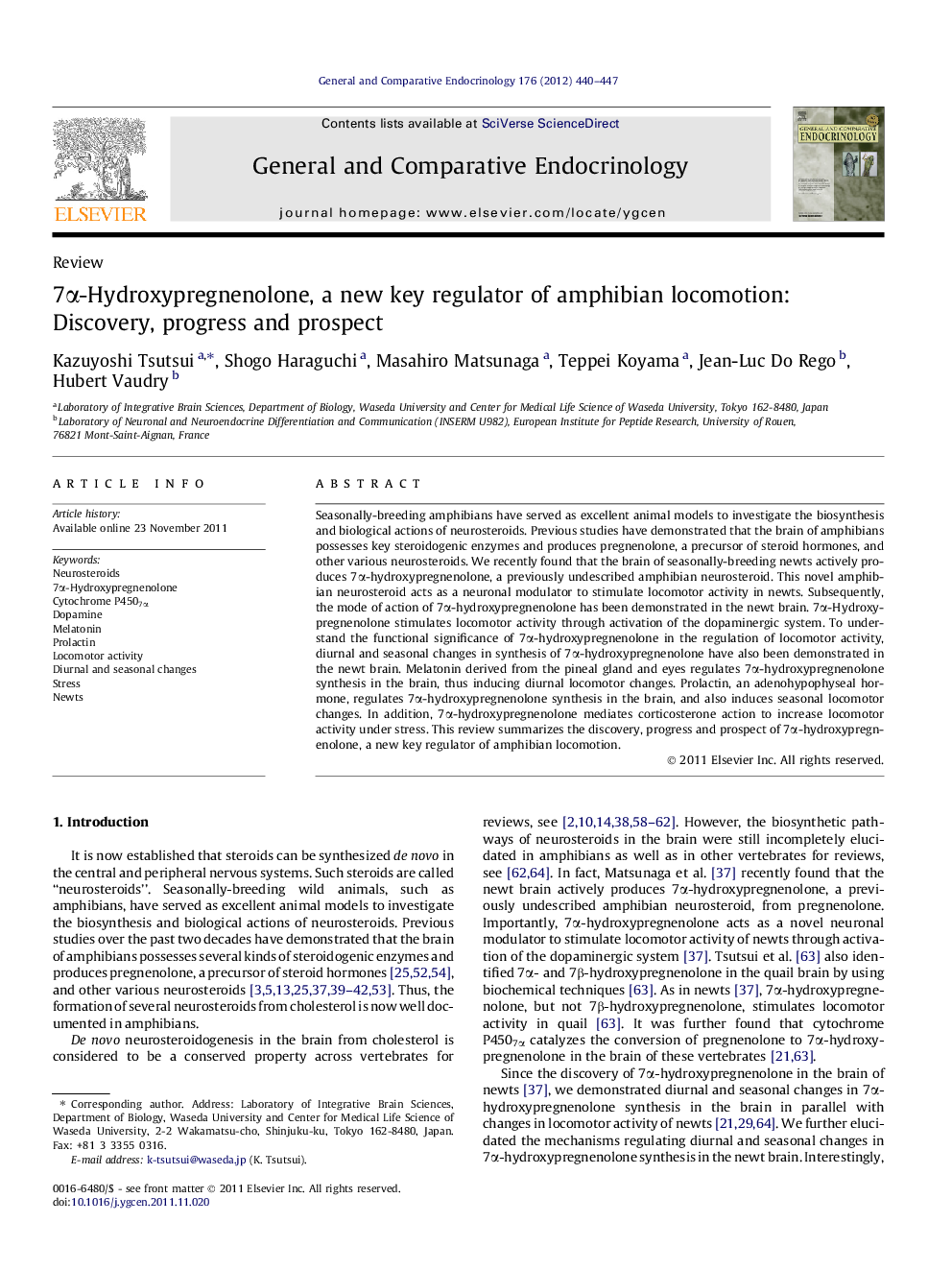| Article ID | Journal | Published Year | Pages | File Type |
|---|---|---|---|---|
| 2800589 | General and Comparative Endocrinology | 2012 | 8 Pages |
Seasonally-breeding amphibians have served as excellent animal models to investigate the biosynthesis and biological actions of neurosteroids. Previous studies have demonstrated that the brain of amphibians possesses key steroidogenic enzymes and produces pregnenolone, a precursor of steroid hormones, and other various neurosteroids. We recently found that the brain of seasonally-breeding newts actively produces 7α-hydroxypregnenolone, a previously undescribed amphibian neurosteroid. This novel amphibian neurosteroid acts as a neuronal modulator to stimulate locomotor activity in newts. Subsequently, the mode of action of 7α-hydroxypregnenolone has been demonstrated in the newt brain. 7α-Hydroxypregnenolone stimulates locomotor activity through activation of the dopaminergic system. To understand the functional significance of 7α-hydroxypregnenolone in the regulation of locomotor activity, diurnal and seasonal changes in synthesis of 7α-hydroxypregnenolone have also been demonstrated in the newt brain. Melatonin derived from the pineal gland and eyes regulates 7α-hydroxypregnenolone synthesis in the brain, thus inducing diurnal locomotor changes. Prolactin, an adenohypophyseal hormone, regulates 7α-hydroxypregnenolone synthesis in the brain, and also induces seasonal locomotor changes. In addition, 7α-hydroxypregnenolone mediates corticosterone action to increase locomotor activity under stress. This review summarizes the discovery, progress and prospect of 7α-hydroxypregnenolone, a new key regulator of amphibian locomotion.
► 7α-Hydroxypregnenolone is a new key regulator of amphibian locomotion. ► The mode of action and functional significance of this neurosteroid are described. ► Future prospects for this neurosteroid studies are discussed.
